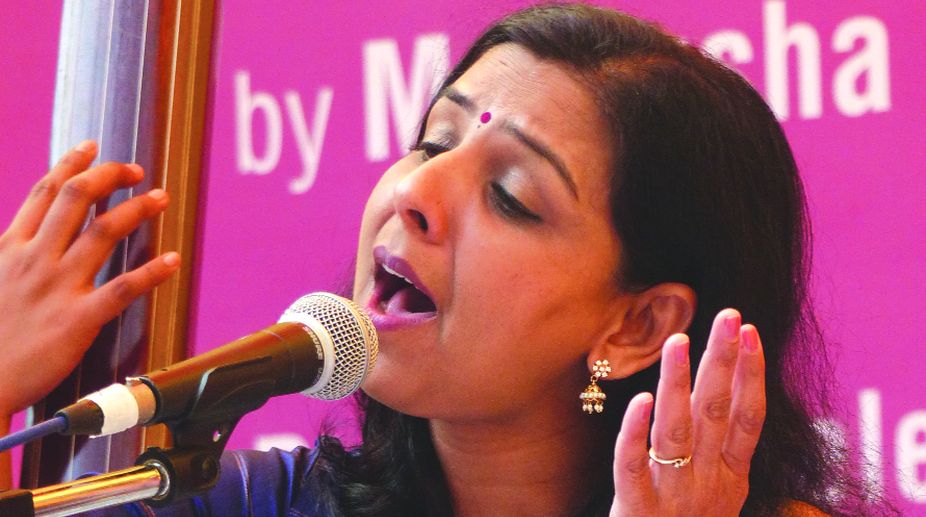A celebration of India’s classical dance heritage at Samasrava
The capital city witnessed an enchanting evening of classical dance at Samasrava, organised by Manasija, a non-profit dedicated to promoting Indian art and culture, recently.

The India Habitat Centre (IHC), since its inception, has been associated more with theatre rather than with music. Gladly that has now changed with several initiatives taken by the management spearheaded by director Rakesh Kacker and programmes director Vidyun Singh, who has now also tied up with promoters of classical music, Spic Macay.
One of the most interesting of these is the morning Raga series, started two years ago; an initiative supported by the doyens of music, including the late Vidushi Girija Devi, Ustad Amjad Ali Khan, Pt Ajoy Chakravorty, Pt Ulhas Kashalkar, Ustad Nishat Khan, all of whom have performed in the series.
Advertisement
Not only does this give an opportunity to hear morning Ragas, but it is also an environmentally-friendly initiative as the concerts are held outside, amid greenery, where one can enjoy the winter sun.
Advertisement
On Sunday, Pune-based vocalist Manjusha Patil sang extensively, treating her listeners, most of whom were young people, to a more than two-hour concert. Manjusha learnt from Pt D T Kane Bua, (he had also learnt from Ustad Vilayat Hussain Khan) and is now learning from Pt Ulhas Kashalkar. She faithfully followed the time theory of rendering Ragas, starting with Ramkali, (interestingly, her Guru Pt Ulhas Kashalkar had also sung Raga Ramkali at the Habitat morning concert earlier this year) going on to Jaunpuri Todi, then Deskaar and finally ending with Bhairavi.
Manjusha’s Ramkali was sung with a deliberation, moving surely from phase to phase, creating a somnolent, languid ambience, not disturbed by any sudden dramatics in the music. One was lulled into a wonderful peaceful space. The first khayal, in vilambit teen taal, “Aaaj Radha tori…” is a traditional Gwalior gharana favourite; the second “Una sang laage…” one associates more with Agra, after the Agra doyen Ustad Faiyaz Khan’s immortal rendering of the composition. The third composition was “Jao re salone…”, in ektaal. Manjusha, with her very versatile voice, resisted the temptation of embellishing her compositions with light “murkis”; she kept the gravity of the Raga’s challan intact by keeping her improvisations sombre.
The Jaunpuri khayal “So ab rang mein dho liya…”, a composition dedicated to Nizamuddin Auliya, the great Sufi, was in tilwara taal, of 16 beats. As Manjusha explained after her concert, she sang the khayal slightly faster than is conventional, as it was her second piece, and her laya work was also more in the Agra mould. The second composition in teen taal was “Channa na bichuaa baaje re…”. On the eager audience’s request, she sang a third Raga, Deskaar, in which she sang one composition “Jhan jhareeya jhanake…”.
She concluded her recital with the Bhairavi thumri, said to be composed by Nawab Wajid Ali Shah “Baaju band khul khul jaaye…”. The emphasis given to the cryptic lyrics made one wonder why indeed the armband (baaju band) keeps opening! Since this has been sung so much by all the greats, it’s a risky composition for a singer of a younger generation, but Manjusha’s version was rendered with a confidence and elan that was admirable.
What was wonderful in the concert was, the music was soothing, something which is not always the case nowadays with younger concert musicians. Despite her impressive voice control and enviable riyaaz in executing lightening taans, the concert soothed rather than dazzled; always an achievement.
Banaras gharana’s Vinod Lele on the tabla, as always provided unobtrusive but none the less effective accompaniment, and Dr Vinay Mishra, also from Banaras, on the harmonium, enhanced the concert. His improvisations in Jaunpuri were particularly spectacular.
(The writer specialises in music, musicians and matters musical)
Advertisement